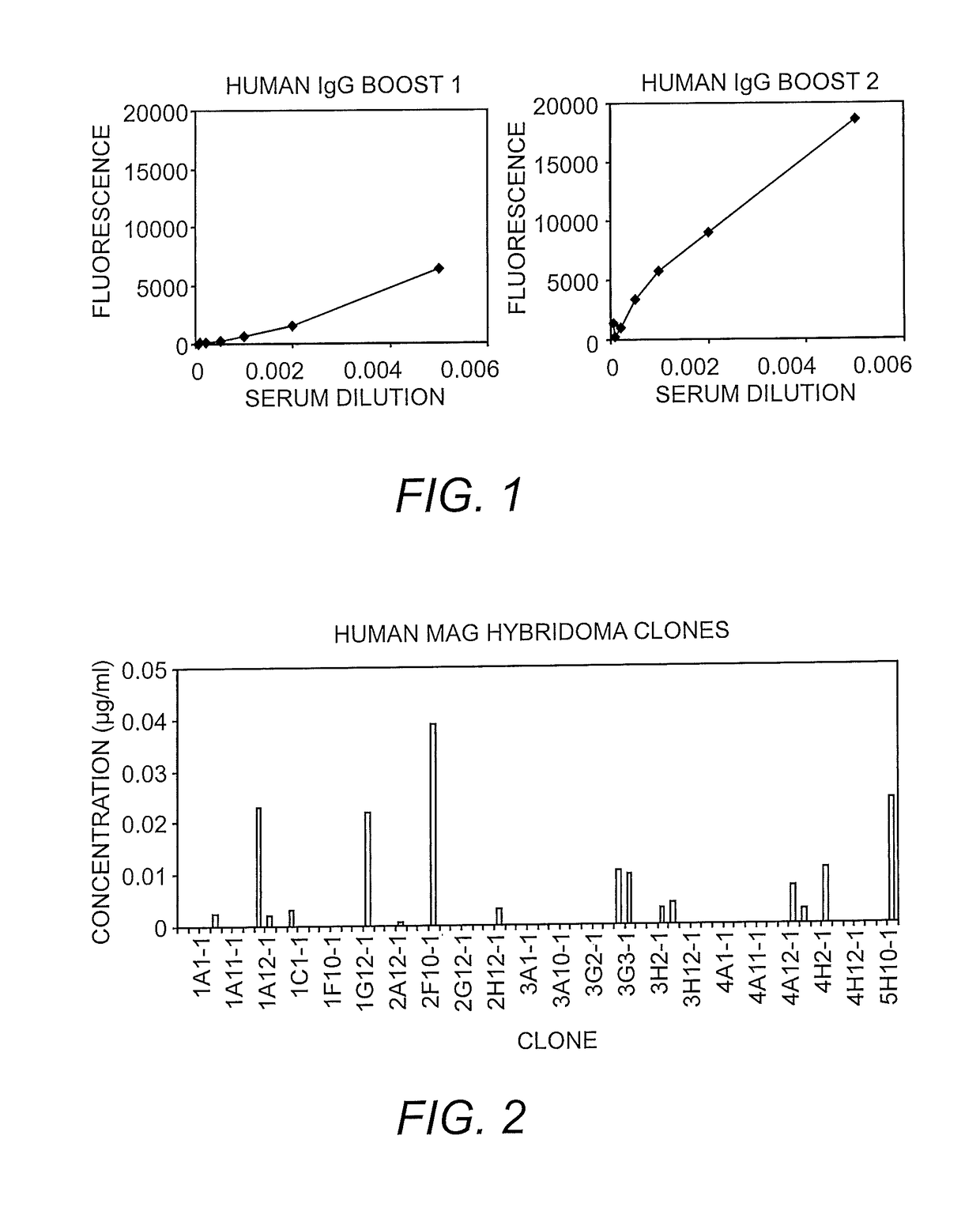Method for producing human monoclonal immunoglobuling antibodies
a monoclonal antibody and antibody technology, applied in the direction of antibody medical ingredients, fused cells, peptides, etc., can solve the problems of inability to obtain antigen-specific igg antibodies, inability to elicit antigen-specific t cell responses in mice, and absence of antigen-specific t cell responses
- Summary
- Abstract
- Description
- Claims
- Application Information
AI Technical Summary
Benefits of technology
Problems solved by technology
Method used
Image
Examples
example 1
Protocol for IgG Production in BLT Mice
[0027]Immunization. Antigenic peptides (e.g., VQLAGAPEPFEPAQPDAY (SEQ ID NO:1), MSIYSDKSIH-NH2 (SEQ ID NO:2), YQANKRHGSW-NH2 (SEQ ID NO:3), YLEGGCSRG-NH2 (SEQ ID NO:4)) or other small molecules are coupled to bovine thyroglobulin using glutaraldehyde as the coupling agent. However, antigens of 10 KDa or larger could be used without coupling to a larger molecule. The complex in solution (1 mgml antigen in 0.05 M sodium phosphate, pH 7.5) is mixed with Fruend's complete adjuvant and human BLT mice are immunized (˜50 μg antigen) through multiple (3-4) subcutaneous injections along the back after shaving the area. After 3-4 weeks, a boost injection of antigen-thyroglobulin complex, mixed 1:1 with incomplete Fruend's adjuvant, is given s.c. (˜25 μg antigen). Subsequently, a second boost identical to the first boost is given subcutaneously 3 weeks later. Four to seven days after the second boost, the animal is sacrificed and the, spleen removed. Plas...
PUM
| Property | Measurement | Unit |
|---|---|---|
| pH | aaaaa | aaaaa |
| frequency | aaaaa | aaaaa |
| electron microscopy | aaaaa | aaaaa |
Abstract
Description
Claims
Application Information
 Login to View More
Login to View More - R&D
- Intellectual Property
- Life Sciences
- Materials
- Tech Scout
- Unparalleled Data Quality
- Higher Quality Content
- 60% Fewer Hallucinations
Browse by: Latest US Patents, China's latest patents, Technical Efficacy Thesaurus, Application Domain, Technology Topic, Popular Technical Reports.
© 2025 PatSnap. All rights reserved.Legal|Privacy policy|Modern Slavery Act Transparency Statement|Sitemap|About US| Contact US: help@patsnap.com

